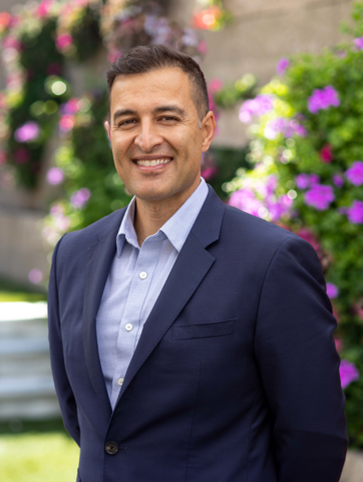

The United Nations estimate that 122 million persons worldwide are forcibly displaced as a result of persecution, conflict, violence, and human rights violations.1 Of those, nearly 40 million persons are classified as refugees—people who have fled international borders in search of safety. Refugees have high rates of post-traumatic stress disorder (PTSD) and depression that appear to persist for many years after displacement.2 Despite the significant needs of this population, accessing mental health care is an uphill battle. Cultural and language barriers, lack of health insurance or covered services, lack of access to transportation, mistrust of service systems, mental health literacy, and stigma all stand in the way.3-4
So how do we bridge this gap? A promising solution is patient navigation. Pioneered with cancer patients in the early 1990s in Harlem, New York,5 patient navigation is designed to support patients in finding their way through complex health and social care systems and to help them overcome barriers to accessing services.6 Patient navigators are trained, culturally competent lay and professional healthcare workers. Their roles generally include streamlining appointments and paperwork for patients, helping patients arrive at scheduled appointments on time and prepared, and connecting them to appropriate social services.7
Although research on patient navigators for refugees is still emerging, my recent work examining electronic medical records of recently resettled Afghan refugees demonstrates just how powerful this approach can be.8 In this program, patient navigators themselves were established refugees—former medical professionals from Afghanistan who shared the same language and culture as the patients they served. These navigators didn’t just help refugees book appointments; they became trusted guides, bridging the gap between patients and healthcare providers through a telehealth platform. They assisted with communication, ensured patients understood their treatment plans, and, just as importantly, provided much-needed emotional and social support.
The impact? Afghan refugees who participated in this program experienced clinically significant reductions in depression and anxiety symptoms. It’s a clear example of how culturally-competent healthcare solutions can break down barriers and help refugees heal. Healthcare policies should formalize patient navigation as a standard service within primary care, behavioral health, and community health settings. Policies should also divert more funds to trainings programs for lay and professional navigators from refugee communities. Also, longitudinal studies are essential to tracking and understand the lasting impact of patient navigator programs on the mental health of refugees. In addition, quality improvement studies are needed to evaluate their effectiveness in reducing symptoms, increasing service utilization, and improving cost efficiency.
By investing in these research efforts, we can ensure that patient navigation programs are not just well-intentioned, but also truly effective, sustainable, and scalable to meet the mental health needs of refugees.
Author Bio:

Qais Alemi, PhD, MPH, MBA
Dr. Alemi is a Professor in the Department of Social Work & Social Ecology. He teaches courses in statistics along with qualitative and quantitative research methods. His research interests include global mental health, investigating the psychosocial needs of populations affected by war and conflict.
References:
- United Nations High Commissioner for Refugees (UNHCR). (n.d.). Refugee statistics. https://www.unhcr.org/refugee-statistics
- Blackmore, R., Boyle, J. A., Fazel, M., Ranasinha, S., Gray, K. M., Fitzgerald, G., ... & Gibson-Helm, M. (2020). The prevalence of mental illness in refugees and asylum seekers: A systematic review and meta-analysis. PLoS medicine, 17(9), e1003337.
- National Refugee Congress. (n.d.). Mental health awareness month: Barriers and access to mental health care. Refugee Council USA. https://refugees.org/mental-health-awareness-month-barriers-and-access-to-mental-health-care/
- Byrow, Y., Pajak, R., Specker, P., & Nickerson, A. (2020). Perceptions of mental health and perceived barriers to mental health help-seeking amongst refugees: A systematic review. Clinical psychology review, 75, 101812.
- Freeman HP, Rodriguez RL. History and principles of patient navigation. Cancer. 2011;117(S15):3537–3540.
- Bitterfeld L, Ozkaynak M, Denton AH, Normeshie CA, Valdez RS, Sharif N, et al. Interventions to improve health among refugees in the United States: a systematic review. J Community Health. 2024;1-22.
- World Health Organization. What are patient navigators and how can they improve integration of care? EuroHealth Observatory. 2022, January 10. https://eurohealthobservatory.who.int/publications/i/what-are-patient-navigators-and-how-can-they-improve-integration-of-care
- Alemi, Q., Todd-Hesham, H., Cook, J., Naderi, W., & Afif, S. (under review). Evaluation of a culturally- and linguistically-adapted patient navigator-led telehealth program to improve mental health outcomes in displaced Afghans. Journal of Immigrant and Minority Health.
